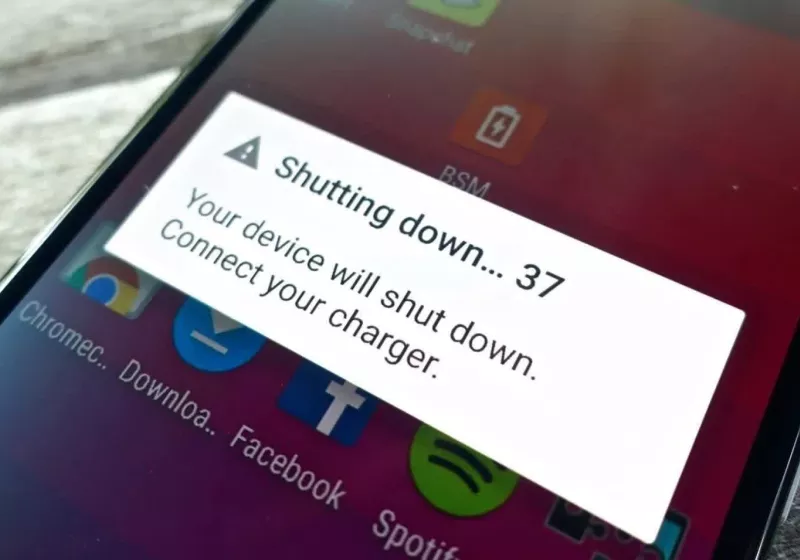During the height of the COVID-19 pandemic, Dr. Dwaun J. Warmack, president of Claflin University, received an email from a student who had left campus and returned home to quarantine. The student wrote:
“It is my prayer that Claflin’s passion for education aligns with its compassion.”
“I am currently typing my senior research paper at the local McDonald’s that I drive to nine miles every day to do this work because my town doesn’t have Wi-Fi bandwidth,” the student wrote. She said she would sit in the parking lot for four hours daily to work on her senior thesis.
Shortly after receiving this email, Claflin University partnered with the Student Freedom Initiative to help provide students with broadband access.
Broadband programs aimed at closing the digital divide in the US are currently in retreat but according to a 2021 McKinsey report, the 82% of Historically Black Colleges and Universities situated in broadband deserts aren’t going anywhere. Broadband deserts are areas that either severely lack access to adequate or have no internet.
In May, President Donald Trump announced the termination of the Digital Equity Act (DEA), calling it “racist” and “unconstitutional.” This $2.75 billion program was part of the Bipartisan Infrastructure Law from 2021. It was established to help close the digital divide by increasing broadband adoption. This program was also essential to funding digital literacy initiatives for public schools and colleges, with some states and local governments already beginning to receive grant rewards. With the untimely end of the DEA, those funds never reached their destination.
In 2020, students at Claflin University and the surrounding areas in Orangeburg, South Carolina, struggled with inadequate internet access because they lived in a broadband desert.
“The only way for students to actually get access to content was to come together in areas that provided [broadband] access, which created a problem,” said Keith Shoates, the president and CEO of the Student Freedom Initiative. He highlighted that at a time when students were supposed to be in quarantine, they were forced to come out of isolation and put themselves and their peers at risk, just to do their schoolwork.
The Student Freedom Initiative is a nonprofit organization that seeks to reduce the wealth gap through education. In 2023, SFI partnered with technology company Cisco, providing 5G internet service across campus. While the Orangeburg community still faces challenges from being in a broadband desert, Claflin University has since transformed its broadband desert into a thriving space for students.
A long history of HBCUs in broadband deserts
Access to an adequate internet connection equips students to do better in the classroom and beyond. But many HBCUs are in broadband deserts.
These broadband deserts are located primarily in the Black Rural South of the US. According to a report from the Joint Center for Political and Economic Studies, the Black Rural South consists of more than 152 counties in 10 states: Alabama, Arkansas, Florida, Georgia, Louisiana, Mississippi, North Carolina, South Carolina, Tennessee, and Virginia. This information pretty much matches data from the Student Freedom Initiative.
As seen from the map above, the Student Freedom Initiative currently works with more than 25 HBCUs in broadband deserts, all located along the Black Rural South in the US. These include Tuskegee University, Florida A&M University, Xavier University of Louisiana and Hampton University. Knowing the history of HBCUs helps one better understand these broadband deserts and how they exist.
HBCUs are among the most underfunded institutions in the country, because of the effects of historical and present-day systemic racism and practices like digital redlining. The term redlining dates back to the New Deal era in the 1930s when banks denied residents from “at-risk” neighborhoods, predominantly from Black communities, to qualify for loans. During this era, government agencies created color-coded maps, highlighting which neighborhoods are least to most risky in terms of loan-worthiness.
Digital redlining is a discriminatory practice that involves internet providers excluding their services in certain locations. If you take a look at a map, you can see the distinction between areas with broadband and those without. According to data from the US Census Bureau (PDF), residents in urban areas were more likely than those in rural areas to have broadband internet subscriptions. Moreover, more than 90% of households in the urban south had broadband access in 2021, versus 85% in the rural south. For example, Mississippi, New Mexico and West Virginia ranked the lowest in broadband access.
Although redlining has been illegal for quite some time, a form of digital redlining still exists, as seen by the lack of competition among internet providers in the Black Rural South.
HBCUs are located in areas with inadequate broadband infrastructure and it doesn’t help that these institutions are severely underfunded by at least $12 million in more than 15 states. According to a Brookings Metro report (PDF), “HBCUs are chronically underfunded due to state underinvestment, lower alumni contributions (related to lower Black incomes and Black wealth), and lower endowments.”
Plenty of studies have shown that low-income communities often lack access to adequate home broadband connections. The McKinsey report noted earlier also shows that more than 81% of HBCUs are in counties where the median wage is below the national average and, compared to non-HBCUs, are in areas where the projected job growth is below the national average. Why does this matter? Improving broadband infrastructure would not just benefit HBCUs or the millions of disconnected Americans in rural communities but could help the US economy at large.
Broadband access for HBCUs could mobilize the economy
There seems to be a wave of uncertainty regarding the country's current state of broadband programs. The Affordable Connectivity Program ended in May 2024, leaving more than 23 million households without access to affordable home internet and, with the recent news about the Digital Equity Act, disconnected Americans may rely on federal funds primarily from the Broadband Equity, Access and Deployment program. But states have run into delays in receiving those funds because of bureaucratic changes. Additionally, there could be further holdups in light of potential changes to the program from the new administration. According to some estimates, most states may not hear back on a timeline until June or July.
Shoates emphasized SFI’s commitment to helping students, regardless of where federal broadband programs stand in this country.
“We’re still moving forward because the problem still exists,” Shoates said.
He emphasized the significance of moving forward with non-federal sources to address the broadband gap for students. In addition to their partnership with Cisco in deploying 5G internet hotspots for Claflin University, SFI also connects these HBCUs to high-net-worth individuals, organizations and other philanthropists in their network.
One of their first notable partnerships was with Robert F. Smith, a philanthropist and the CEO of Vista Equity Partners. The Student Freedom Initiative was founded after Smith gave nearly $34 million to the graduating class of Morehouse College in 2019, paying off their student loans. Smith currently serves as SFI’s chairman.
Without the federal backbone support, nonprofit groups such as SFI will work with state legislatures and their corporate partners to keep the wheels moving. Still, eliminating or stalling federal funding from this equation will slow the reduction of the broadband gap.
Warmack, Claflin's president, conveyed that federal broadband funding can really help, especially for severely underfunded institutions such as HBCUs. For example, Claflin University received a $2.9 million grant from the Connecting Minority Community Project through the National Telecommunications and Information Administration, which helped provide wireless internet on campus and in the surrounding areas.
Shoates maintains that investing in HBCUs and improving their broadband infrastructure could potentially increase economic activity by half a trillion dollars, which would be reflected in the country’s GDP.
According to data from McKinsey, a strong HBCU network could increase Black worker incomes by about $10 million, contribute at least $1.2 billion in incremental business profit, reduce student loan debt by $300 million and provide $1 billion in additional consumer expenditures.
Broadband access and future student outcomes
Yvette Thomas, SFI's program director of Institutional Transformation, said that HBCUs face persisting challenges because of the lack of high-speed broadband and the digital gap, which restricts students from accessing resources and online professional opportunities.
Thomas spearheads the execution of HBCU capacity building, including modernizing the Information Technology infrastructure.
“When kids come to college, they usually come with at least five to six devices for the network and it slows the network down, ” Thomas said.
Without access to a high-speed internet connection, students can fall behind in the digital landscape, especially in the new era of artificial intelligence.
“There’s gonna be this 26-mile marathon and they’re gonna be on mile two … and that puts them at a competitive disadvantage,” Shoates said.
He added that broadband access is imperative to students as it equips them with the proper digital literacy skills they need in the workforce.
Claflin University has since transformed its broadband desert into a space that provides 5G internet for students but what about the other 82% of HBCUs still living in these internet deserts? Who’s to say that there aren’t others with similar experiences to that Claflin student driving to a McDonald’s parking lot for Wi-Fi just to complete work? Without the federal backbone support, the work of SFI, its corporate partners and generous donations from philanthropists are vital to help reduce the broadband gap in the meantime.









 English (US) ·
English (US) ·